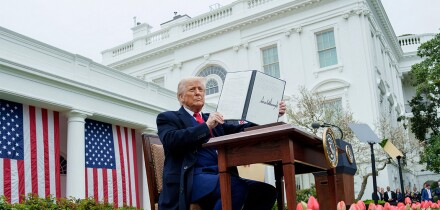Energy traders are turning to the derivatives market to hedge against the risk of counterparties going bust, driving them to consider everything from credit-default swaps to equity puts on counterparties' stock, according to DW sister publication Power Finance & Risk. "In the past we relied on corporate guarantees. What we are looking at [now] is derivatives," said Frank Hilton, chief credit officer at American Electric Power, on his company's approach to dealing with potential defaults. PG&E National Energy Group has also been active in tapping Wall Street dealers on default protection prices, according to Bachar Samawi, v.p. of trading, though he said the cost of protection is holding back many trades. Both were speaking at the Current Challenges in Energy Trading conference in Houston last week.
Enron's rapid descent into bankruptcy was the catalyst sparking interest in hedging counterparty credit risk. While the Houston energy trader was the most widely quoted underlying name in the energy credit derivatives sector, Hilton told conference attendees that not many of Enron's corporate counterparties held default protection against it going belly up. Samawi added a key reason was that many counterparties did not begin evaluating their exposure to Enron early enough. By the time they became concerned, the cost of credit derivative protection was prohibitively high, he explained. In the wider trading industry, Samawi said the view that protection is expensive holds back many power players, but he advised firms to look at each deal on a case-by-case basis to assess the risk and the hedging costs.
Hilton noted that in addition to credit derivatives, credit insurance is another alternative, though he added that AEP doesn't use it because of the time lag between an event and the actual payout: 60 days as opposed to five business days for a credit default swap. Although AEP has yet to pull the trigger, it has also looked at buying puts on the stock of counterparties that were in danger of being dragged down by the bankruptcy of a sister company. He told the audience that while the bond markets are generally more fundamentally driven, stock prices are increasingly indicative of future problems. "You have to get a little bit creative to protect the value in your book," he observed.
Samawi told delegates it is important to work through the different products to find a hedge that works economically. He noted that NEG recently was looking at a deal with a counterparty that basically it couldn't deal with because of credit, so it shopped the market for default derivatives and found equity puts to be considerably less expensive. AEP will put on derivative coverage against some counterparties in anticipation that it might have some future exposure to that company, Hilton said, and it treats the premium outlay as a hedging cost.






